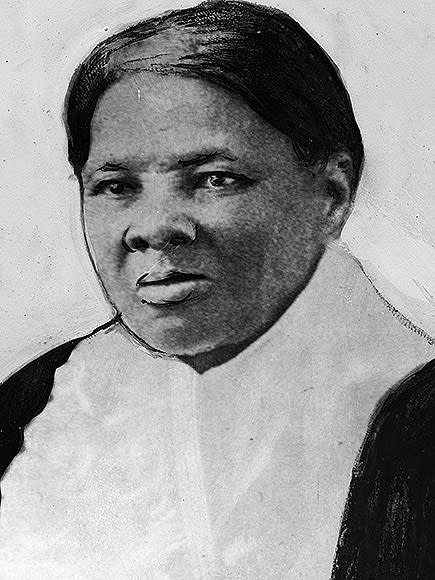Harriet Tubman: 5 Things You Didn't Know About the Underground Railroad Icon and Civil War Spy Who Will Grace the New $20 Bill

Many Americans rejoiced when it was announced Wednesday that Harriet Tubman will replace former President Andrew Jackson on the front of a new $20 bill.
Though Tubman is one of the most iconic figures in American history, there are still a few things you may not know about the famed abolitionist. PEOPLE spoke with Kate Larson, author of the 2004 biography Bound for the Promised Land: Harriet Tubman, Portrait of an American Hero, to uncover five lesser known facts about Tubman.
1. She did not invent the Underground Railroad.
Though hers is one of the most notable names associated with the network of secret routes and safe homes that helped escaped slaves flee the South, Tubman did not invent the Underground Railroad, as is sometimes reported. Instead, she tapped into an already existing network when she fled slavery in 1849. She then became an Underground Railroad conductor and "created a stronger and better network," says Larson.
When Tubman reached Philadelphia she found that freedom was "hollow" for her because the people she loved were still enslaved. She decided to bring them to freedom herself, traveling back and forth to Maryland for 11 years to rescue her family and friends. According to Larson's research, Tubman made about 13 trips and personally saved about 70 of her friends and family. She also gave instructions to about 70 more people she knew who fled without her leading them. "She did this for the people that she loved," Larson explains. "Her passion for her family was profound."
2. She served as a spy for the Union during the Civil War.
Tubman was partially paid by the U.S. government for her spy work during the Civil War. She helped Col. James Montgomery, a Union officer, conduct a raid behind Confederate lines and also helped liberate 750 slaves from plantations in South Carolina.
She became even more famous during the Civil War, when she was known as the "Black She Moses," says Larson. Tubman served the Union as a scout, spy, nurse and cook. "She did everything she needed to do for the Union cause to help destroy slavery."
3. Tubman earned $20 as a monthly pension after the Civil War.
Ironically, $20 was the amount of money Tubman earned as a monthly pension after the Civil War. But she didn't get the pension until 35 years after the war was over. "She wanted back pay that she felt she was owed as a spy and she was denied that," Larson says. "It was given to another African-American man who claimed that he was the spy and that Tubman was not, when in fact she was."
Later, in the 1890s, Tubman was awarded a pension for her work as a nurse in the Civil War, and as the wife of a veteran who had died. But as Vox notes, "It was still less than the $25 a month paid to full soldiers."
4. Tubman was an ardent suffragist.
Though Tubman's name is synonymous with the struggle for racial equality, she devoted much of her later years to fighting for women's right to vote. "It was denied her," Larson says. "Her brothers in fact were able to vote, but she was not, which is pretty galling considering she's the one that rescued them and brought them out of slavery."
Tubman gave speeches for the cause and worked closely with fellow suffragist Susan B. Anthony. "Tubman was beloved by many abolitionists and women's rights activists," Larson says.
5. She created a nursing home for African-Americans called Harriet Tubman Home for the Aged.
"Old age homes were not widely available for African-Americans so she created one on her property," Larson says. It is now a museum and a historic property that will soon become a part of the National Park Service.
"It's a tremendous achievement for our country to have a woman on a piece of currency," Larson says, "and a black woman just reflects the diversity of our country and the direction that we're going to be more inclusive and to celebrate the accomplishments of women and people of color."
